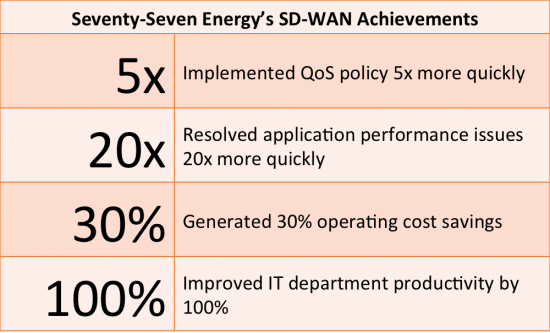
A Day in Life of a Network Administrator
“Fire drills. Box-by-box management. Sometimes, it’s about searching for a needle in a haystack,” says Nick[1], a network administrator, as he summarizes his typical workday over our coffee break. “I’m perpetually behind,” he adds. After a few sips, Nick starts to pour out his laundry list of frustration. (And oh boy, it’s an ugly list.)
- Meetings after meetings. It never ends.
- After meetings, then comes the fire fighting: tool malfunction, virus, security breach, degrading user experience, the list goes on.
- On a good day, more than half of it is spent on configuring tools or provisioning new apps.
- On a bad day, on top of fire drills, hours are spent justifying operational simplicity and ROI to management in order to maintain an ever-decreasing IT budget.
“It would be nice,” Nick interjects, “if I could easily manage the network like that (snapping his fingers) so I have more time on strategic stuff – like enabling business innovation and driving more value for my stakeholders (his employees and customers).”
What if there was such a way?
When asked what Nick considered as barriers inhibiting his productivity (or “value creation” in his words), he re-caps: silos, lack of automation, control and management in the network performance management area.
- “I work in silos.” Nick shares that he does not have a clear view of the entire networks across remote locations. Each device or tool is configured manually. One simple change in policy or SLA means a series of adjustment from routers, to switches, application and network performance management tools, security tools, network storage devices, and WiFi access points. “Urgh…too many to list,” Nick exclaims. “If a different site is impacted,” he adds, “that means I sometimes must fly there the next day to rectify it with the local IT person.”
- Lack of Automation. To provision a new site, device, or application, “it’s done manually. What would make life so much easier is to be able to automate such provision based on a template or a set of pre-defined policies. Then, with just a few clicks, it’s done seamlessly.”
- Lack of Control and Management. For situations that warrant centralized control, for example, Quality of Service (QoS) configuration, root cause analysis, capacity planning or service monitoring, “having a network-wide reporting and centralized management would be Nirvana,” he smirks with sarcasm.
What if Nick could have a single-pane of glass view of his network? I mean everything – from topology to flow/traffic, paths, devices, interfaces, and even queues in a GUI-friendly dashboard. And on top of that, he could also reduce mean-time-to-resolution, pinpoint issues and troubleshoot problems within seconds of accuracy via automation? Well, that is no longer an ideal with the partnership between LiveAction and Cisco. It is a proven reality and can soon be the case for Nick too.
The Case of Seventy-Seven Energy
With a lean IT staff of 12, Seventy-Seven Energy’s charter was to build an entirely new network from square one, to service a staff of 3,000 in 48 states. Seventy-Seven Energy unlocked the full potential of its Cisco IWAN infrastructure by:
- Taking advantage of hybrid WAN architecture;
- Speeding up application delivery, performance optimization, troubleshooting and resolution; and
- Easily deploying other advanced services such as QoS, PfR, and Netflow.
The end result: achieving SD-WAN – WAN Management Simplification. So how can you achieve WAN management nirvana in three easy steps?
Step 1: Join Nick on August 26th
If your story sounds similar to Nick, or you’re just curious to learn more, join us on August 26, from 10 am to 11am PT for the second part of our SD-WAN webcast series. LiveAction and Seventy-Seven Energy will share their successes and achievements, notably:

Step 2: See. Point. Click. Fix.
Really? (Really) At a high level, LiveAction has the following See-Point-Click-Fix features:
- See (Visualization): Visualize real-time end-to-end network traffic. Examine historical QoS, flow, routing, and IP service-level agreement (IP SLA) data.
- Point (Decision Making): Analyze hop-by-hop path, devices, interfaces, and queues. Locate and troubleshoot problems
- Click (Control): Enable and deploy QoS, Network-Based Application Recognition (NBAR), Flexible NetFlow (FNF), Cisco Application Visibility and Control (AVC), and Cisco Medianet. Create IP SLA probes and Media Services Interface (MSI) endpoints
- Fix (Improve): Edit QoS policies, access control list (ACL), Policy Based Routing (PBR), and IP SLA.
All of the above were demonstrated at Cisco Live in San Francisco. Watch the Breakout Session.
Step 3: Download the FREE 14-Day Trial
Experience it. Don’t just believe. Test drive LiveAction in your own environment. If your organization has a Cisco networking infrastructure, then that’s an added bonus. 14-day FREE trial is available for download from the Cisco Marketplace today.
Step 4 (Optional, but Encouraged): Share Your Experience
Give Nick and I a follow-up topic to discuss in our next coffee break. Join the conversation at Cisco Enterprise Networks Communities. You can also engage with us on Twitter @AnnaDuong and @CiscoEnterprise.
Attain WAN Management Nirvana starting with Step 1 today. Register.
[1] Nick is fictitious name based on a real person. Nick works as a Network Administrator for a publicly traded company in Silicon Valley. He oversees data center and infrastructure management for 14,000 employees worldwide.


Great post thanks for sharing